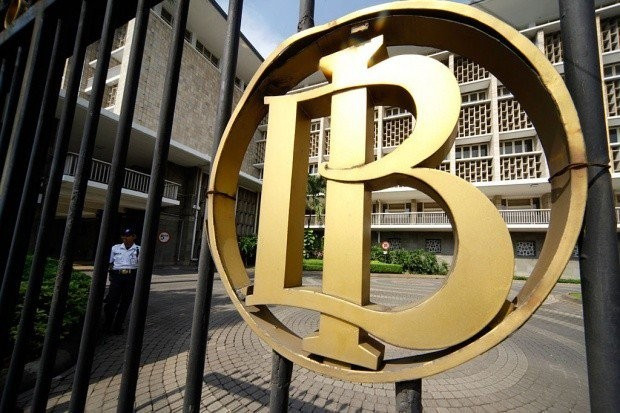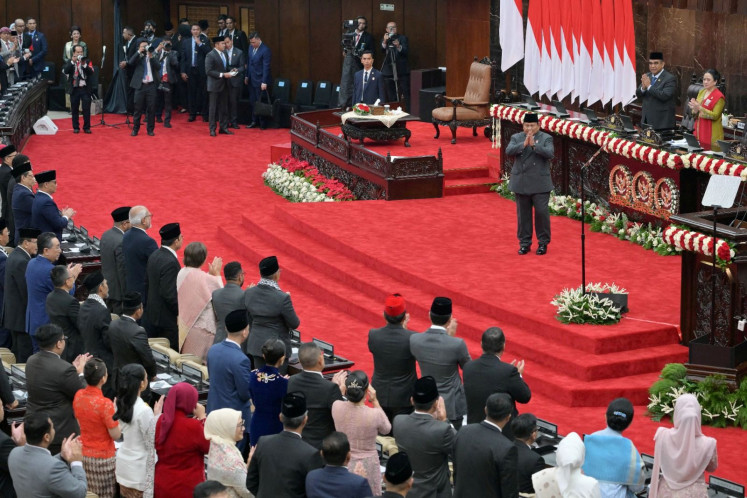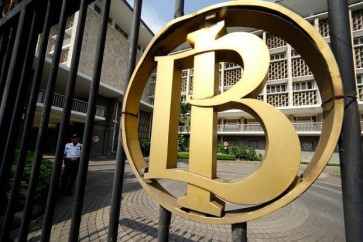Popular Reads
Top Results
Can't find what you're looking for?
View all search resultsPopular Reads
Top Results
Can't find what you're looking for?
View all search resultsAnalysis: BI cuts rate as loan growth slows, boosting Prabowo’s growth agenda
Change text size
Gift Premium Articles
to Anyone
B
ank Indonesia’s second consecutive rate cut in August, and its third this year, reflected both domestic headwinds and shifting global dynamics. The central bank lowered its benchmark rate by 25 basis points to 5 percent, just a week before the U.S. Federal Reserve signaled a dovish turn. That shift further expanded the policy space for emerging markets like Indonesia to ease monetary conditions. For the Prabowo administration, the decision offers timely support for its ambitious growth agenda.
Governor Perry Warjiyo emphasized that Bank Indonesia’s policy adjustments remain grounded in technical assessments, particularly inflation stability. The central bank has successfully kept inflation close to its 2.5 percent target—within a one-percentage-point tolerance band—consistent with its forecasts. This benign inflation backdrop has provided room for monetary easing.
However, the rate cut was not only about inflation. Loan growth in Indonesia has been on a steady decline throughout 2025, raising concerns over domestic financing momentum. After peaking at 10.3 percent year-on-year in February, growth slipped to 9.16 percent in March, 8.88 percent in April, 8.43 percent in May, and 7.77 percent in June. By July, credit expansion had slowed to 7.03 percent, its lowest pace in over two years. The persistent deceleration underscored the need for more accommodative policy to stimulate lending and economic activity.
At the same time, global market conditions have turned more favorable. The Fed’s dovish shift, announced after BI’s August move, has buoyed sentiment across emerging markets, with analysts projecting further gains in the Jakarta Composite Index (JCI). While the JCI briefly slipped late last week—down 0.4 percent on Thursday and 0.7 percent on Friday—investor confidence remains intact after the index notched a record-high close of 7,944 on August 20. Foreign investors have returned in force, pouring Rp10.7 trillion into equities over the past two weeks, fueling optimism of a strong market finish this week.
The parallel between Indonesia and the U.S. has not gone unnoticed. Critics argue that the Fed’s dovish stance was shaped by political pressure from President Donald Trump, who has repeatedly demanded lower rates to sustain growth. A similar dynamic is playing out in Jakarta, where President Prabowo Subianto has been more explicit in directing institutional resources to align with his growth priorities.
Bank Indonesia, for instance, has pledged Rp130 trillion in liquidity support for the government’s affordable housing program, partly through government bond (SBN) purchases. Such coordination underscores how monetary and fiscal levers are being mobilized to meet Prabowo’s 5.4 percent growth target for 2026.
The timing of the rate cut also coincides with the launch of the Patriot Bond, a new instrument introduced by Indonesia’s sovereign wealth fund, Daya Anagata Nusantara (Danantara). The Patriot Bond was designed to mobilize private sector contributions toward strategic national initiatives. Unlike conventional retail bonds, it prioritizes developmental objectives over investor returns, offering a coupon rate of just 2 percent—significantly below the average 5 percent yield on retail sukuk.



















